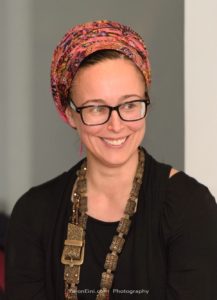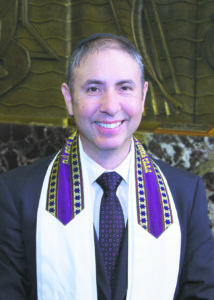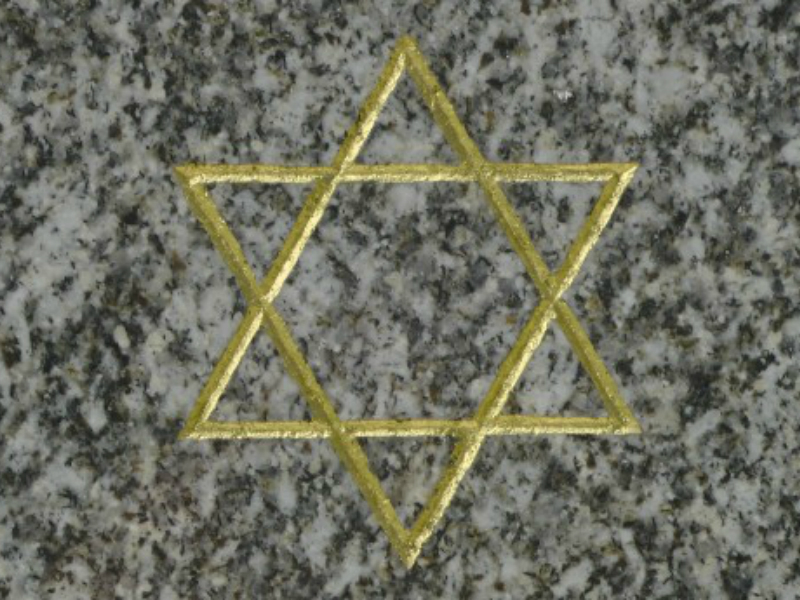While discussions about conversion often focus on requirements, conversations with people on the inside – converts and those that guide them – centre on feelings.
You can’t get closer to the letter of the law than Rabbi Reuven Tradburks, Israel director of the Rabbinical Council of America and staff liaison for 11 conversion batei din across Canada and the United States. Prior to making aliyah nine years ago, he spent a decade as director of the beit din of the Vaad Harabonim of Toronto, attending approximately 500 Orthodox conversions. He cried at most of them.
As the conversion candidate immersed in the mikveh, Rabbi Tradburks would listen from the next room. “When they uttered the words committing themselves to a Jewish life of Torah observance, knowing the efforts they’d made, the sincerity – often sacrifices – I’d feel humbled, overwhelmed by the sublime nature of this moment and this person,” he explains.
When the new Jew and the rabbis gathered outside the mikveh to announce the convert’s Hebrew name, Rabbi Tradburks was often asked to say the misheberakh, but declined.
“They thought it was because I was humble, but the reason was that I’d never be able to make it to the end of that prayer without bursting into tears.”

Ellie Bass met Rabbi Tradburks while going through Orthodox conversion. She was drawn to Judaism while performing in Israel as a professional dancer. The process led her to her husband – not the other way around. Today, Bass is director of the Yetta Nashman Jewish Family Institute in Toronto.
“Becoming Jewish is like marrying into family. There are some family members you like more than others, some you immediately love and others you learn to live with. But in the end, it’s family – and what an incredible, small and impactful family we are. Though we may not always agree, or even like each other, we are bound to one another. The power and responsibility of that is profound.
“My conversion was a journey not just to Judaism, but to myself. It came with challenges, doubts, fears and deep experiences, which are part of any relationship. I’m thankful that the process allowed me to take my time, wrestle with my own ideas of what it would mean to be Jewish and whether that was truly for me, and that I had many people around me from all denominations who were candid, honest and real, which helped me do the same.”
READ: BEING A JEW OF COLOUR: FINDING ACCEPTANCE AND INCLUSION
Rabbi Anibal Mass, who runs the Conservative conversion program at Congregation

Shaarey Zedek in Winnipeg, regularly witnesses the type of personal transformation experienced by Bass.
“The journey is intense and no two conversions the same. It makes people look inside. I try to push them into that spot. Every class, we study one Jewish value. I present a question from the Talmud to prove a point. I create an ethical dilemma, push them to realize where they stand, and then provide a rabbinic approach or solution,” said Rabbi Mass.
This relevance to contemporary life was important to Barbara Evans when she converted through Congregation Dorshei Emet in Montreal.
“The Reconstructionist movement is a bit different. It’s an evolving religion. We want to have something relatable in real life, taking the important values, making it meaningful and inclusive,” she says of the path she chose with her husband, Matthew Strohl. The brit milah for their son Levi was held recently. His middle name, Samuel, honours his late great-grandfather, in accordance with a Jewish custom.
Although her family wasn’t religious, Evans grew up Protestant in a tiny town on the Ottawa River. She always felt different from the people she grew up with. At 17, her mother helped her apply to Marianopolis College and move to Montreal.
Unintentionally, Evans found herself continually gravitating toward Jewish friends. “I identified with them. It was very easy,” she says.
Evans met Strohl in medical school. “I always knew it would be important to him to have a Jewish identity and family,” she explains. “It wasn’t really a question or a conversation – more a natural progression, part of the package, an unspoken decision we made. A known thing.”
Evans studied with the late Rabbi Ron Aigen, whom she says was instrumental in laying the foundation for her beliefs. Her family was very supportive.
“They always knew. When I met Matt, we explained how we felt. They wanted me to be happy. I’m not someone who believes everything that happens is meant to be, but this felt very natural. After my conversion, I felt much more like myself than I ever had,” she says.
Evans is joined in that sense of destiny by Claudette Edgehill. Edgehill’s car broke down right in front of Adath Israel in Toronto on her very first visit. She interpreted that as a sign.

Originally a Christian from Guyana, Edgehill arrived in Canada in November 1980. She’d worked in the United States for a Jewish family with two daughters. “Those little girls loved being Jewish, and they transferred that love to me by teaching me how to celebrate Shabbat and all of the Jewish holidays,” she says.
Edgehill attended church, but celebrated Jewish holidays privately – even observing fast days. One day, a neighbour handed her the book Wheels of a Soul by Rabbi Philip S. Berg. Four years of study at the Kabbalah Centre followed, and involvement in the Orthodox community.
Edgehill longed to be Jewish, but believed Jews had to be born Jewish. One Shabbat, the rabbi gave a sermon on converts. Edgehill was blown away. “At that moment, I committed to becoming a Jew,” she says.
Edgehill was introduced to Rabbi Steven Saltzman, the late spiritual leader at Adath Israel. After listening to her story, Rabbi Saltzman said it would be his honour to be Edgehill’s sponsoring rabbi. She went before the beit din in August 1996. “That day, I became a new person,” she says. “A Jew.”
